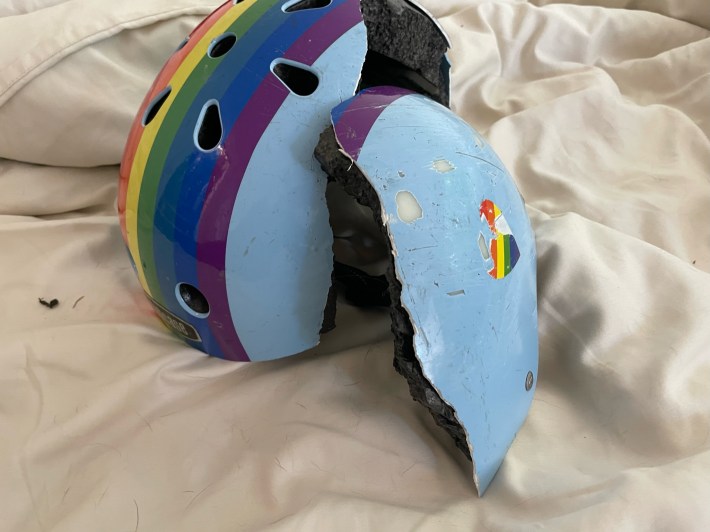Note: GJEL Accident Attorneys regularly sponsors coverage on Streetsblog San Francisco and Streetsblog California. Unless noted in the story, GJEL Accident Attorneys is not consulted for the content or editorial direction of the sponsored content.
Walk Bike Berkeley advocate Jacqueline Erbe was riding home from a meeting with Berkeley transportation officials in March of last year. She crossed the intersection at 9th and Channing, her eight-year-old son riding behind her. "Next thing I remember is waking up in the hospital," she told Streetsblog in a recent interview.
As Erbe would soon learn, an inattentive motorist had rear-ended her. She went over the vehicle's hood, slammed into its windshield, was propelled forward into a parked car, and landed on the pavement. An emergency room doctor happened to witness the crash and administered first aid before the ambulance arrived.

Doctors explained her extensive injuries: dislocation and breaks in the vertebrae of her neck, damage to an artery in her spine--injuries that put her at risk of stroke and sudden death. She also had a concussion and a broken femur.
But when she first regained consciousness, her own injuries were not on her mind. "I repeatedly asked where my son was," she told Streetsblog. "At first I didn't believe them when they told me he was alive and okay."
Fortunately, the doctors were telling the truth. Firefighters and witnesses to the crash had looked after him until her husband was able to pick him up.
Erbe would undergo two major surgeries: one to fuse three of her vertebrae and another to put metal screws and braces in her femur.

"Plus I had substantial soft tissue damage," she said.
She spent a week in the hospital, followed by another few weeks in physical rehabilitation, followed by physical therapy and medications for nerve pain. "The leg is still causing me problems," she says now. "I can't walk far."
But, all things considered, Erbe said she feels lucky. She could have had a deadly brain bleed. She could have been paralyzed. And, of course, she's thankful her son was not hurt, at least not physically. Nevertheless, "I started as an advocate so this wouldn't happen to people," she told Streetsblog. "Instead, it happened to me."

In fact, the meeting she was riding from that afternoon was specifically about Channing, which Berkeley has designated a "bicycle boulevard." But the only thing that makes it so are signs and road markings. Other than that, it's a wide, dangerous street "designed for speed," Erbe explained.
Focusing on the driver who hit her--who was at fault--misses the larger issue, she stressed to Streetsblog. "These are results, not accidents."
They are the results, she said, of decades of designing roads that tolerate motorists who speed, run stop signs, and just generally don't pay attention to the safe operation of a two-to-five-ton machine. Erbe wants to see more roads redesigned on the model of nearby Milvia Street, which has protected bike lanes, narrowed vehicle lanes, and concrete curbs to keep drivers out of the bike lane and make sure motorists are forced to go slow and pay attention. On Milvia, inattentive or speeding motorists are likely to hit a curb or a parked car before they hit a person. "We have to stop building streets so that if you don't drive a car, you're as good as hosed," said Erbe.
Erbe was already pushing for a traffic circle at 9th and Channing to force cars to slow down. After her crash, Berkeley traffic engineers finally put in a quick-build island, as seen below:

The bent sign in the above image illustrates the point perfectly: let inattentive and irresponsible motorists hit things so they don't hit people. The solution is to bolster the island so it can survive getting smashed into by a motorist, and then to narrow the entire street, to make it more like Milvia. "My incident could have been prevented by street design," according to Erbe.
Traffic planners and government officials need to remember the ongoing costs of not doing anything. For every person killed, there are hundreds of people injured to varying degrees. There's also the harder-to-quantify psychological trauma of traffic violence: try to imagine the effect on a child of seeing his bleeding, unconscious mother taken away in an ambulance.
"He was left with strangers and didn't know if I was alive," said Erbe. When she tries to talk with him about it, he mostly recounts how the firefighters let him turn on the fire truck's siren. "He's doing okay, but aside from the siren, he doesn't like to talk about it."





